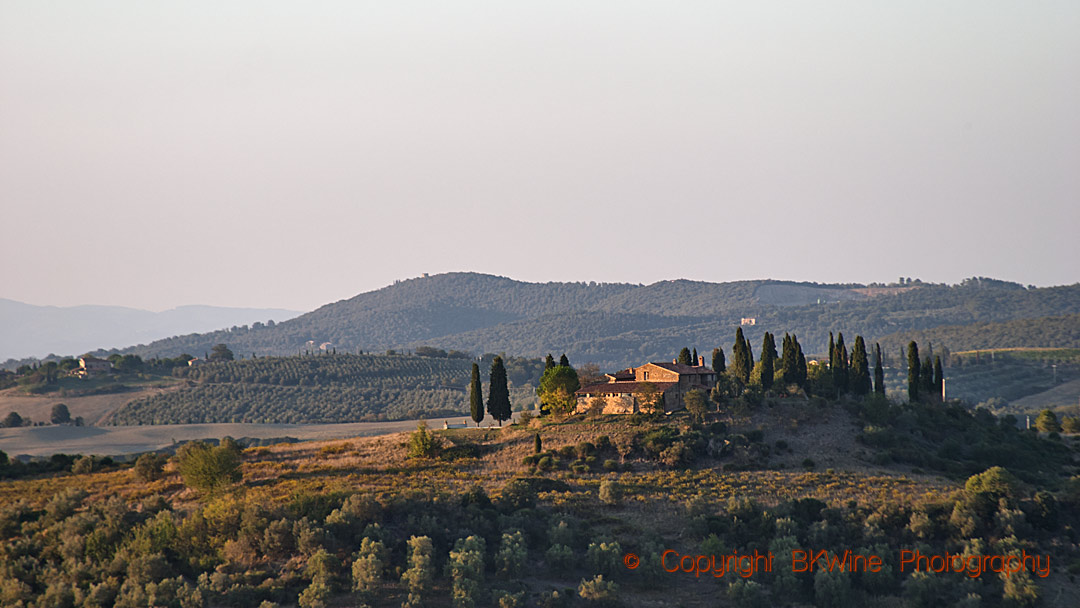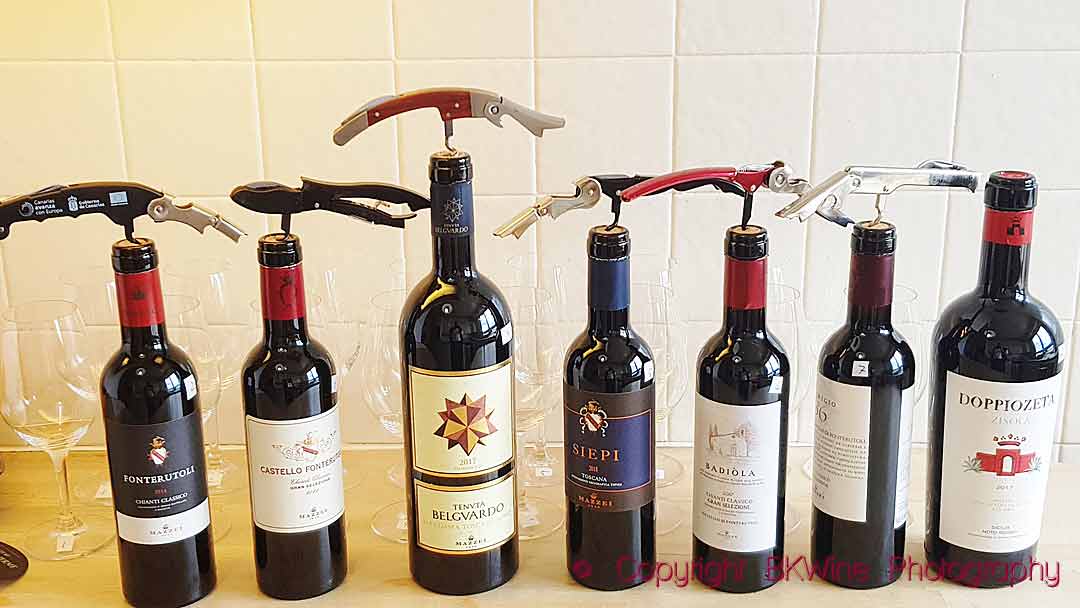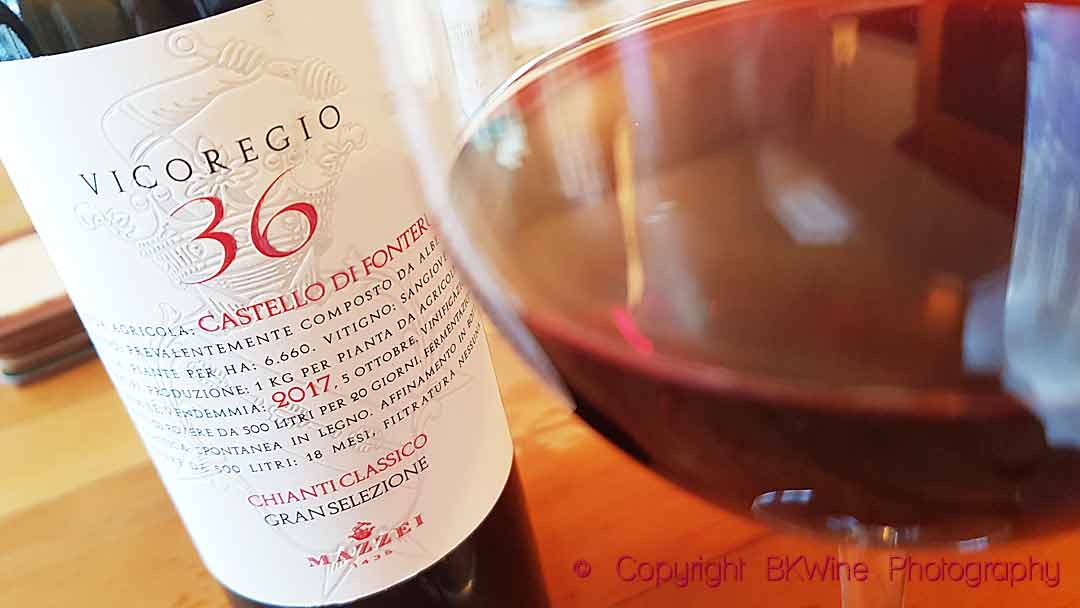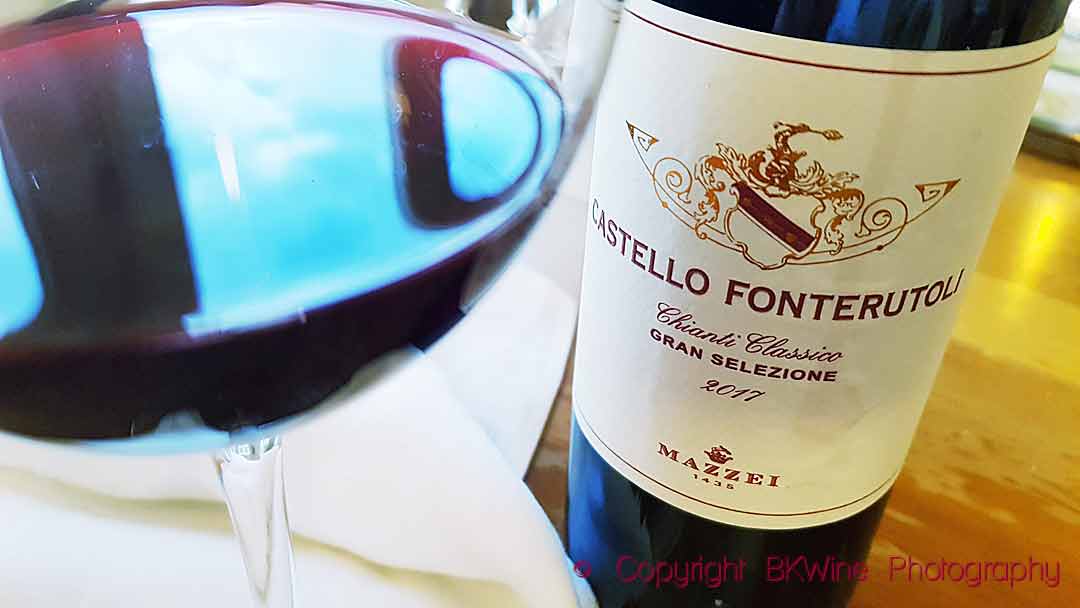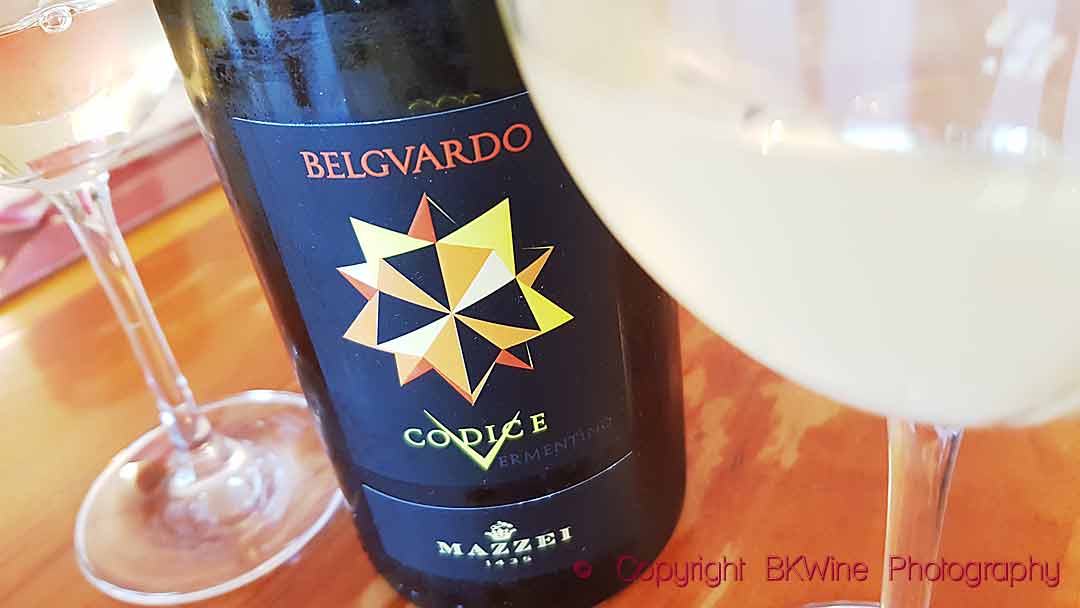Mazzei is one of Tuscany’s, Italy’s and maybe also the world’s oldest wine producer. The same family still owns it since 1435. It is impressive. We recently spoke with Giovanni Mazzei to hear more about the launch of some of their new wines and new vintages from Tuscany, but also other parts of Italy. We taste several of their wines, including Chianti Classico, a handful of Grand Selezione, a super tuscan, wine from Sicily and a delicious vermentino.
The heart of the business is Castello di Fonterutoli, located in what is today Chianti Classico DOCG. The family’s oldest vineyards are found in the three neighbouring villages of Castellina in Chianti, Castelnuovo Berardenga and Radda in Chianti. But Mazzei also owns vineyards in Maremma and Sicily.
This is a longer version of an article published on Forbes.com.
Maremma is the coastal region of Tuscany. Here, the family bought Tenuta Belguardo in the 1990s. Belguardo is in the southern part of Maremma, about 150 km south of Florence, close to the town of Grosseto. The estate covers 70 hectares, half of which are vineyards. The Bordeaux grapes were a big attraction. “Bordeaux blends are some of the world’s great wines,” says Giovanni.
The Mazzei family has also found suitable terroir outside of Tuscany. They often visited Sicily and, of course, got to know the wine producers there. Among them was the well-known Planeta, who encouraged them to start making Sicilian wine. “In 2004, we found Zisola,” says Giovanni, “in the southeastern part of the island, the origin of the nero d’avola grape, and a stone’s throw from the beautiful baroque city of Noto.”
The wines
Fonterutoli 2018, Chianti Classico, Mazzei
Fonterutoli is the regular Chianti Classico, light in style and easy-drinking with a lot of red fruit and also floral aromas. Slightly soft in structure with smooth tannins. Pleasant wine with an affordable price tag.
“This is our signature, our DNA, the heart of Fonterutoli,” says Giovanni. “We blend grapes from eight different places, with different types of soil and altitude. We can choose the best blend and get good results every year, even the slightly more difficult years, which is one reason why it is so successful.”
2018 was almost perfect until the end of the summer. The rain that came in September, however, created a bit of a challenge. “But”, says Giovanni, “the cooler September gave us elegant, silky tannins and an extra layer of floral aromas, lavender, roses…” (16,50 euro)
Gran Selezione
Starting with the vintage 2017, the Mazzei family decided to make three different Chianti Classico Gran Selezione to show the specific characters from the three villages of Castelnuovo, Radda and Castellina. All three wines are 100% sangiovese. The gran selezione category was introduced in 2014. The rules state that a gran selezione must have at least 30 months of ageing and be made only from the estate’s own grapes.
Read more about the story behind these three gran selezione wine here on BKWine Magazine: Three new “cru” from Marchesi Mazzei in Chianti Classico.
Vicoregio 36, 2017, Chianti Classico Gran Selezione, Mazzei
There’s a lot of texture in this wine, also elegance and deliciously fresh acidity. There are tannins as well, just the right amount. I feel soft vanilla aromas from the oak in the long and savoury finish
The grapes come from the village of Castelnuovo, from the southernmost and warmest part of their Chianti Classico vineyards. The number 36 in the name refers to the fact that this is a selection of 36 different clones of sangiovese (this is a grape with a considerable number of clones). They all ferment separately in small oak barrels, so-called vinification intégrale. “We do 36 small micro-vinifications, a big job, but it’s worth it,” says Giovanni. (55 euro)
Badiòla 2017, Chiant Classico Gran Selezione, Mazzei
Deliciously tasty with lots of fruit and dark berries, some oak and fresh, high acidity (6.4 gram per litre) that gives a sense of vitality to the wine.
The grapes come from Radda in Chianti, and the vineyards are located at a high altitude, 570 m above sea level, among the highest in the Chianti Classico. The climate is cooler than Mazzei’s other vineyards, with later harvest, usually around mid-October. The soil is poor and rocky. (55 euro)
Castello Fonterutoli 2017, Chianti Classico Gran Selezione
The Fonterutoli is a vineyard of 21 hectares, five kilometres south of the village of Castellina in Chianti. Fonterutoli, along with Siepi, is Mazzei’s historical heart. The vineyards are at an altitude of 420–550 meters. I love the refreshing fruit and the vibrant acidity of this wine. The structure is dense, but the wine is still elegant and light in style. (45 euro)
Siepi 2018, Toscana IGP, Mazzei
Siepi is a vineyard of 14 hectares in Castellina, not far from Fonterutoli. The grapes in this wine are 50% merlot and 50% sangiovese. Siepi has a special microclimate with large temperature differences between day and night during the summer.
”We thought that merlot could grow very well at Siepi”, says Giovanni. ”We should not forget that merlot plays a vital role in the Tuscan winemaking; several cuvées at the luxury level are made from merlot. This is the blend of my grandfather. There was a fight over percentages, but at the end of the day, they decided for equal proportions; the best decision, no grape is dominant.”
Aromas of red berries such as cherries and strawberries dominate in the wine, but I also find dark fruit from merlot. It is powerful but still elegant with a long, intense taste, well-integrated tannins and a delicious freshness. (~80 euro)
Maremma
Tenuta Belguardo 2017, Maremma Toscana DOC, Mazzei
Maremma is the coastal region of Tuscany. It was relatively unknown before Sassicaia and the rest of the Super Tuscans became world-famous. The Bordeaux grapes thrive here on the coast, and here we have 85% cabernet sauvignon and 15% cabernet franc. The wine is spicy, peppery with lots of dark berries. It has a dense structure, and it is full-bodied and complex. Long, savoury finish and well-integrated oak.
“We fell in love with this place”, says Giovanni. “It is a romantic location, full of biodiversity. It’s a place that can deliver outstanding cabernet sauvignon. Cabernet franc came later, and it gives an extra layer of flavours, makes the wine more complex.” (38 euro)
Codice V 2019, Vermentino Maremma Toscana DOC, Mazzei
Codic V is an exciting skin macerated white wine made from vermentino, a grape that seems to be getting more and more popular worldwide. 50% of the grapes are skin macerated for nine months, 20% in amphora and 30% in steel tanks. The remaining 50% stays on the lees in steel tanks. This is a wine with a massive structure and a lovely mouthfeel. It is full-bodied but at the same time crispy, fresh and very dry with lots of citrus fruits in the aromas, a delicious and exciting wine.
“This wine sums up what I expect from a Mediterranean wine,” says Giovanni. “Vermentino is a variety of the Mediterranean. It is a funky vermentino but traditional in style. The clones are originally from Corsica [where vermentino is an important grape].”
“We are looking for the best way to make this wine. We have no recipe; we are on a mission to find a way to make vermentino a great wine. A great wine means structure to age, extra levels of complexity, bigger tasting profile. With skin maceration, we get this, and the amphoras give the right level of oxygen exchange, the extra complexity. We want to establish vermentino as an important grape in the Maremma.”
Actually, they started this skin contact project almost ten years ago. It took time to find the right size of the amphoras. Now they feel they have the right balance but, in the future, they might increase the portion of wine that stays in amphora. (24 euro)
Sicily
Doppiozeta Zisola 2017, Noto Rosso DOC, Mazzei
Doppiozeta is Mazzei’s top wine from Sicily. The grape is nero d’avola from Zisola’s three best vineyard plots. Expressive nose with soft, warm and sweet fruit. Ripe fruit and oak aromas come together in the taste. Surprisingly fresh acidity (6.3 grams/litre, a lot for Sicily). Quite delicious.
Giovanni points out that Sicily is not just Etna, and he is right. Etna gets all the attention, but Sicily has much more to offer. “The Noto area is equal to Etna,” he says. “We arrived in Sicily with the dream to make a great indigenous grape. We love nero d’avola, it is soft and sweet and gentle but also elegant if treated well. It can give a great wine. (31,50 euro)
It is a splendid collection of wines that Mazzei presents here. Not least, the freshness in these wines is outstanding. I really appreciate high acidity in red wines. Sometimes I think that sangiovese would benefit from less oak ageing. But in combination with the fresh acidity, the result, in any case, is balanced.
Prices are from the Mazzei web shop (except for Siepe).


